Year 9 Algebra Worksheets
Adding and Subtracting Algebraic Fractions (A)
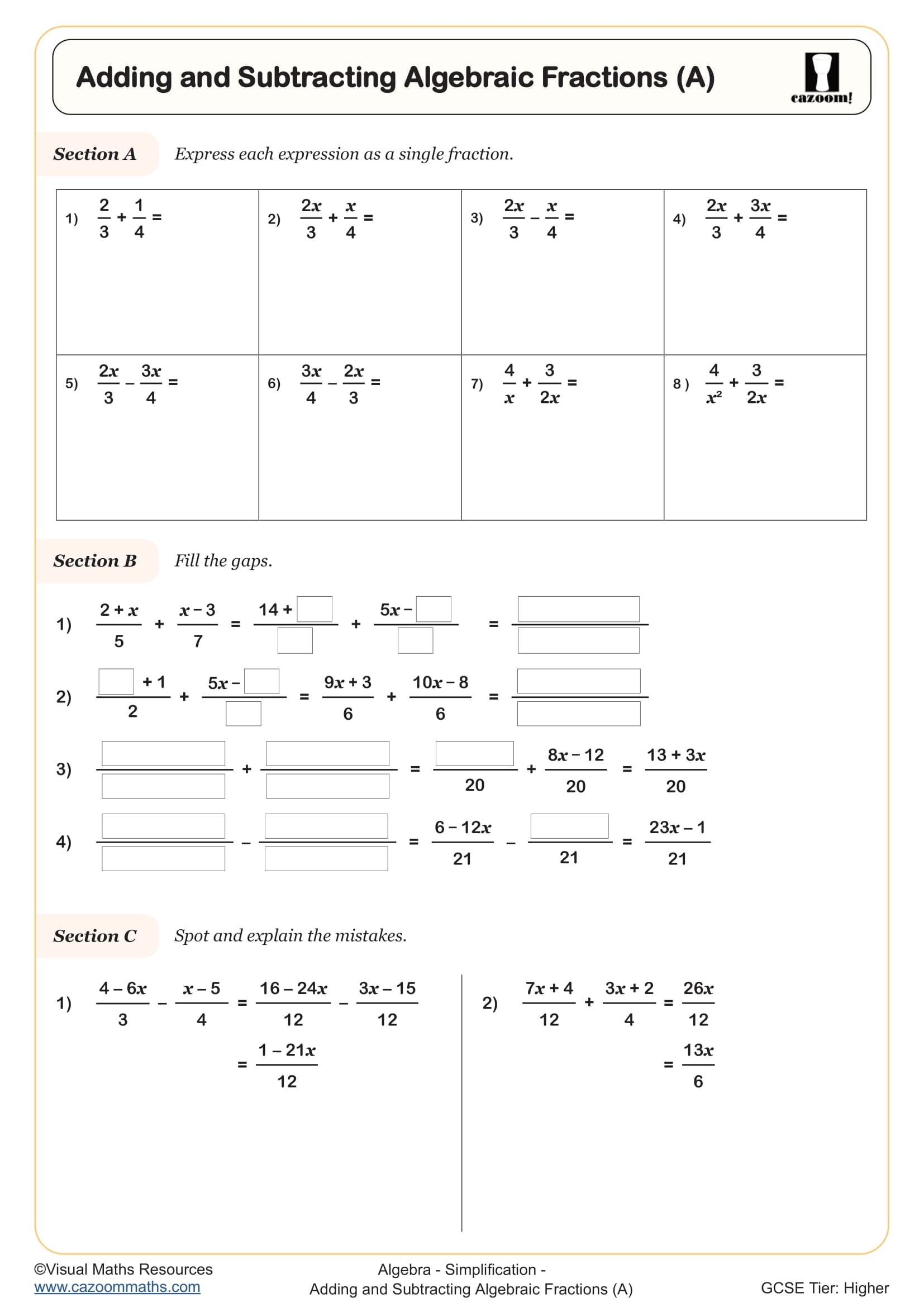
Algebraic Angles in Parallel Lines
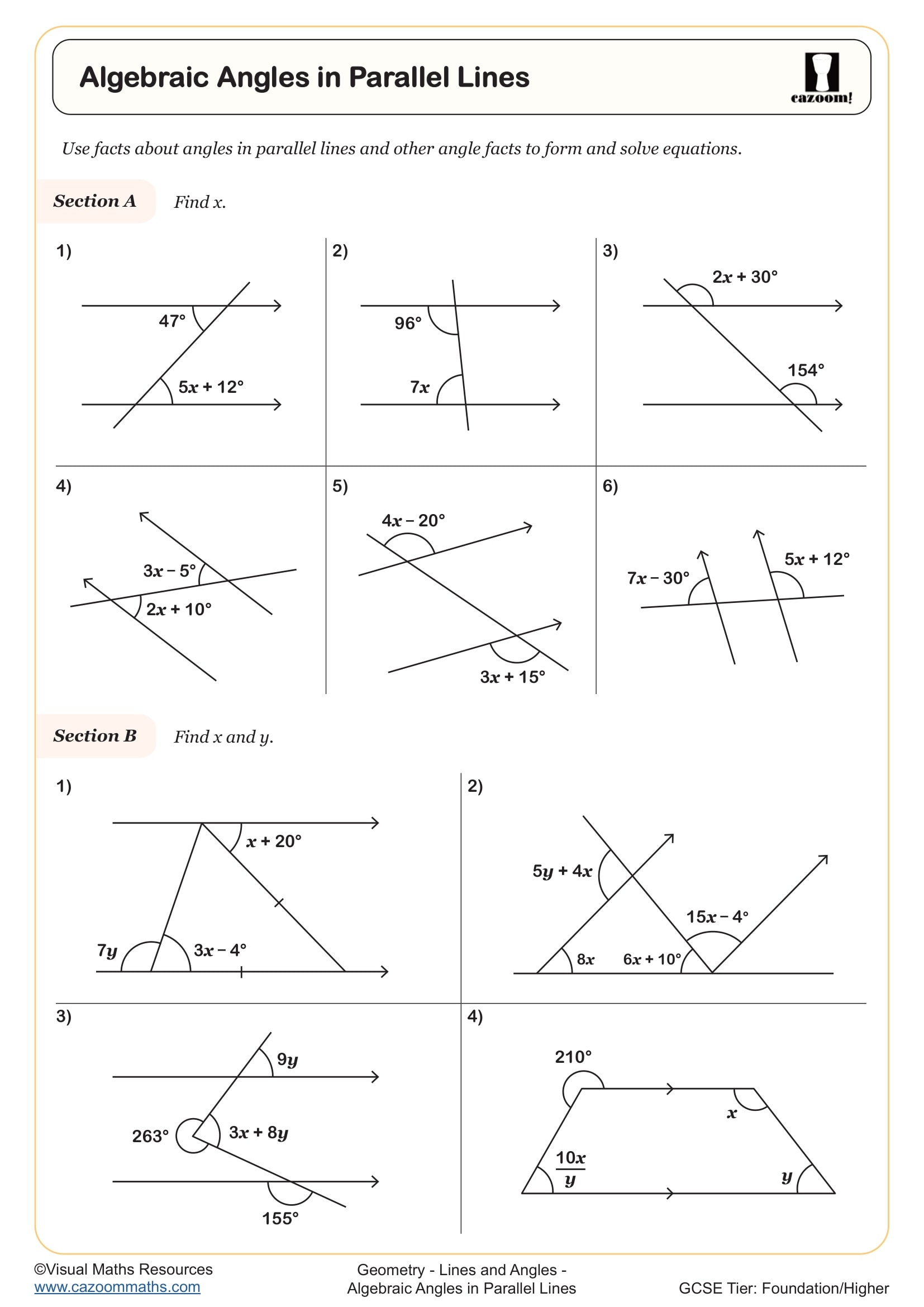
Algebraic Fractions (A)
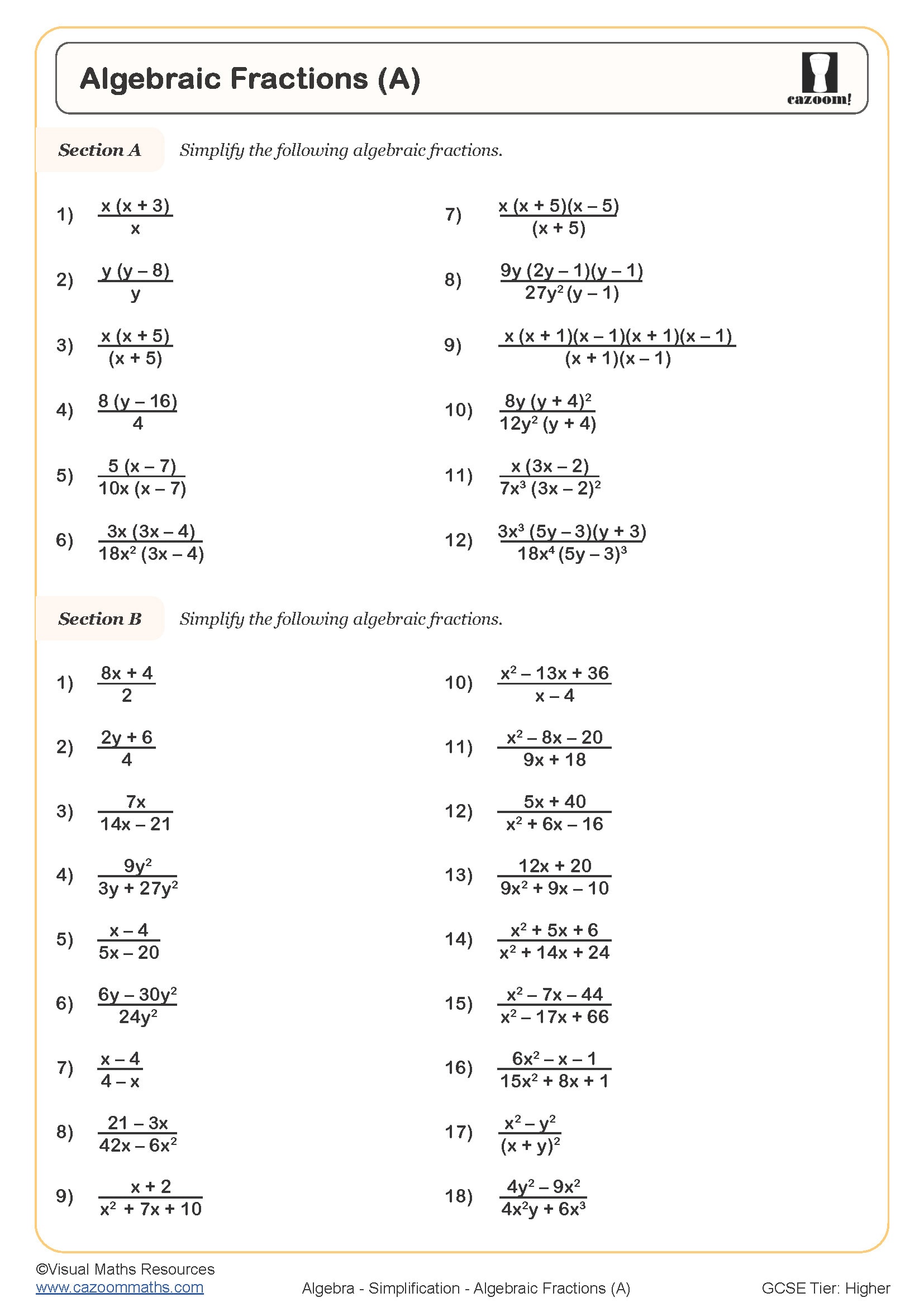
Algebraic Fractions (B)
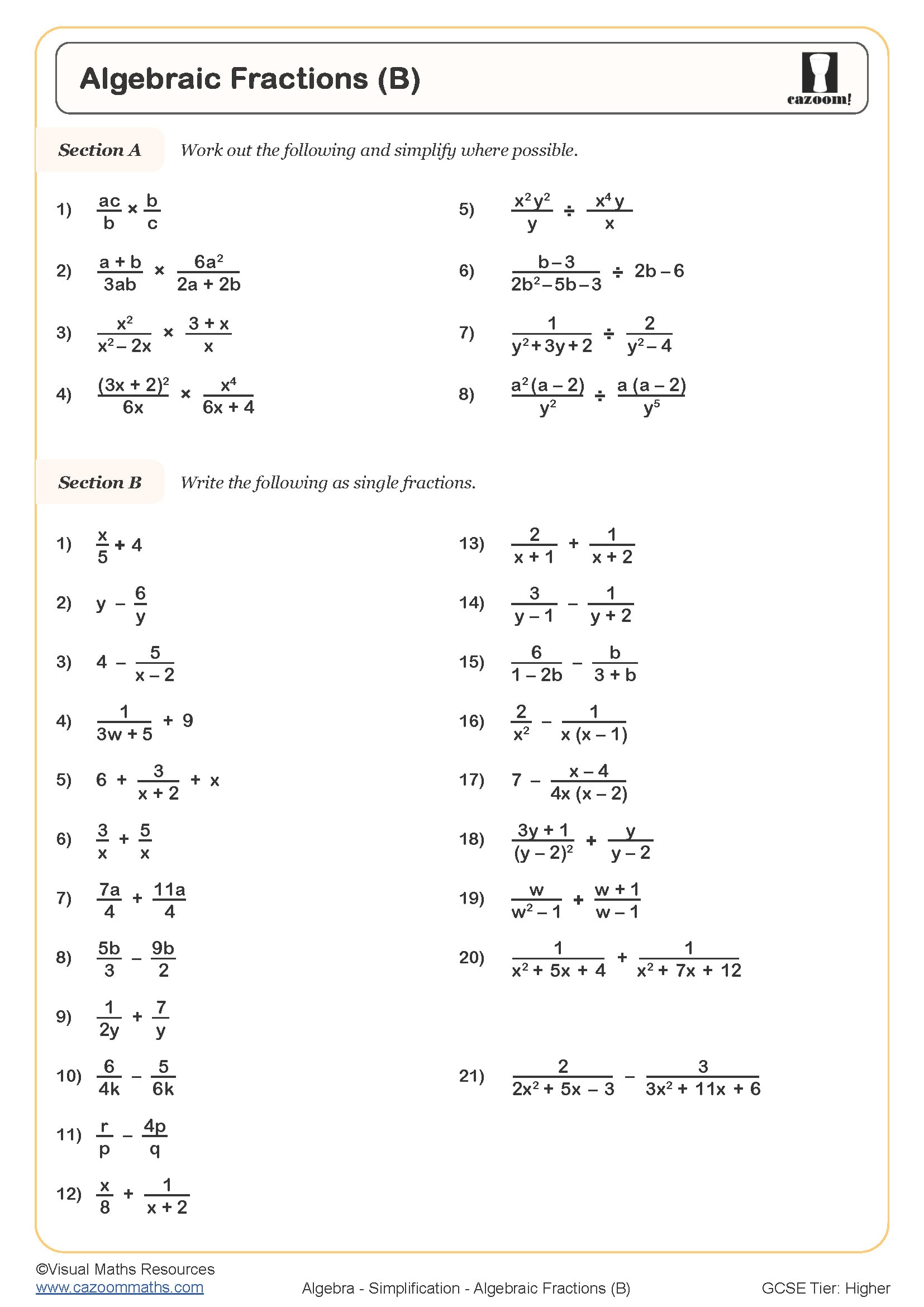
Find the Values
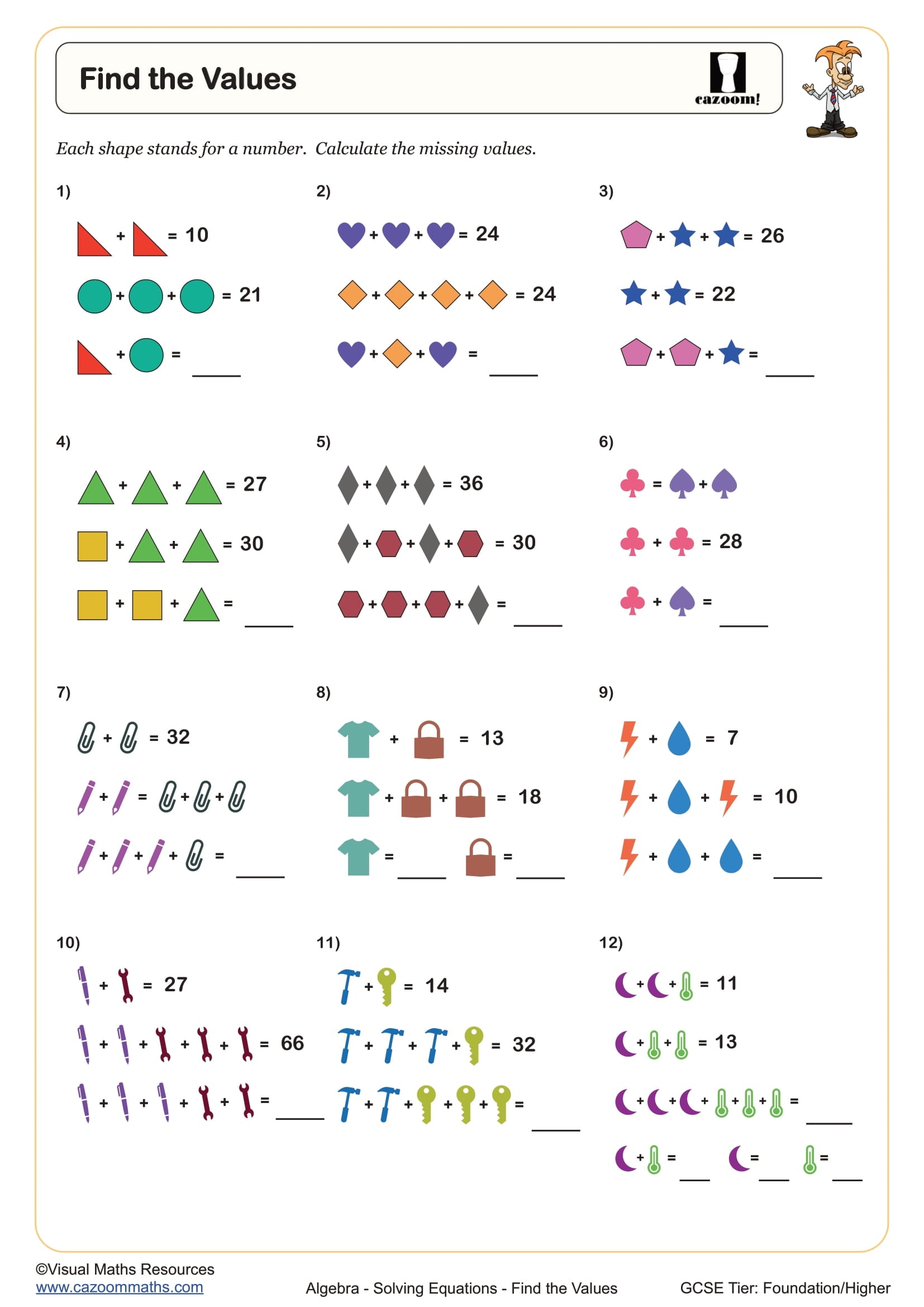
Forming and Solving Equations
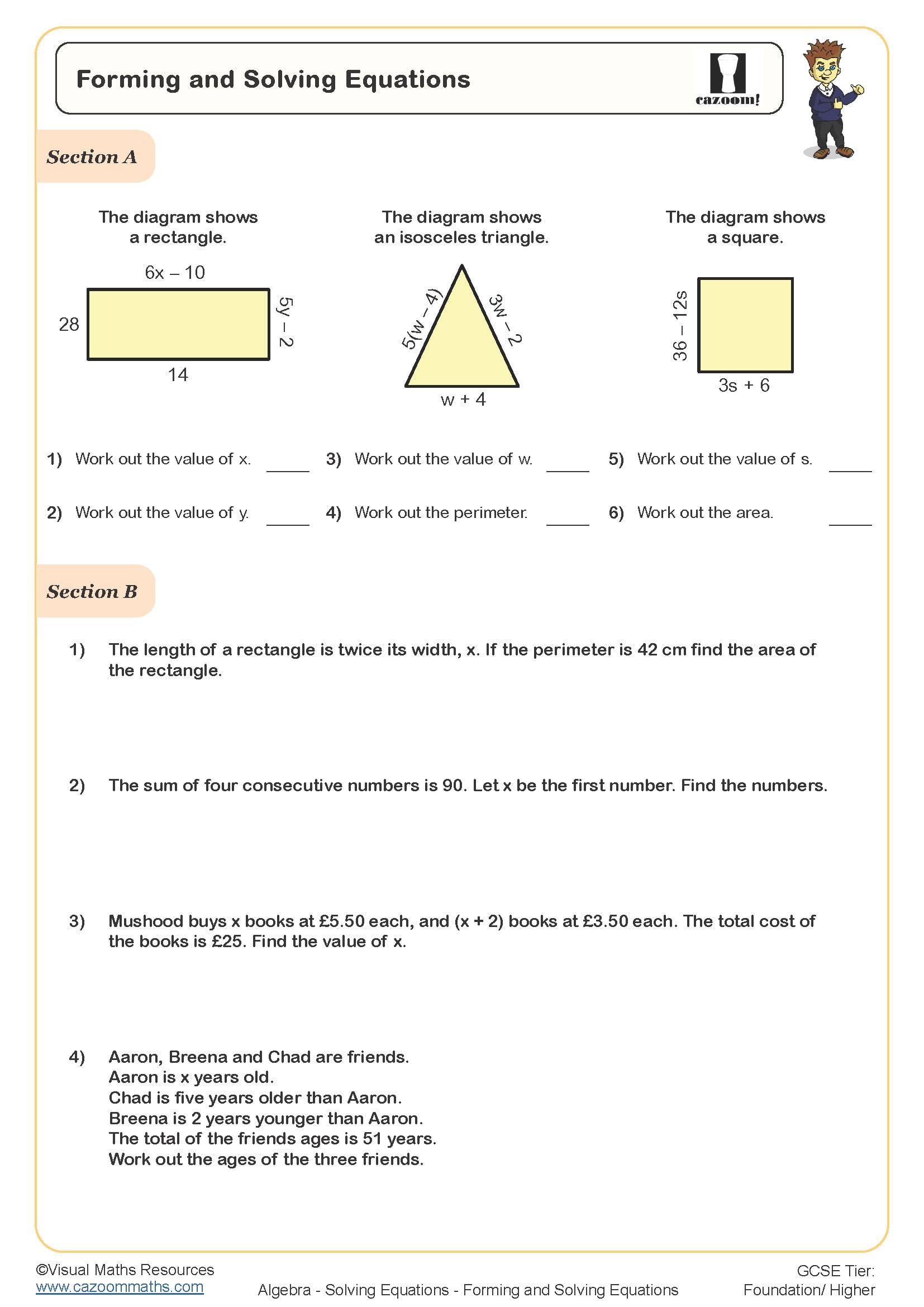
Forming and Solving Equations Involving Angles (A)
-Worksheet.jpg)
Forming and Solving Equations Involving Angles (B)
-Worksheet.jpg?w=3840)
Fractional Coefficients
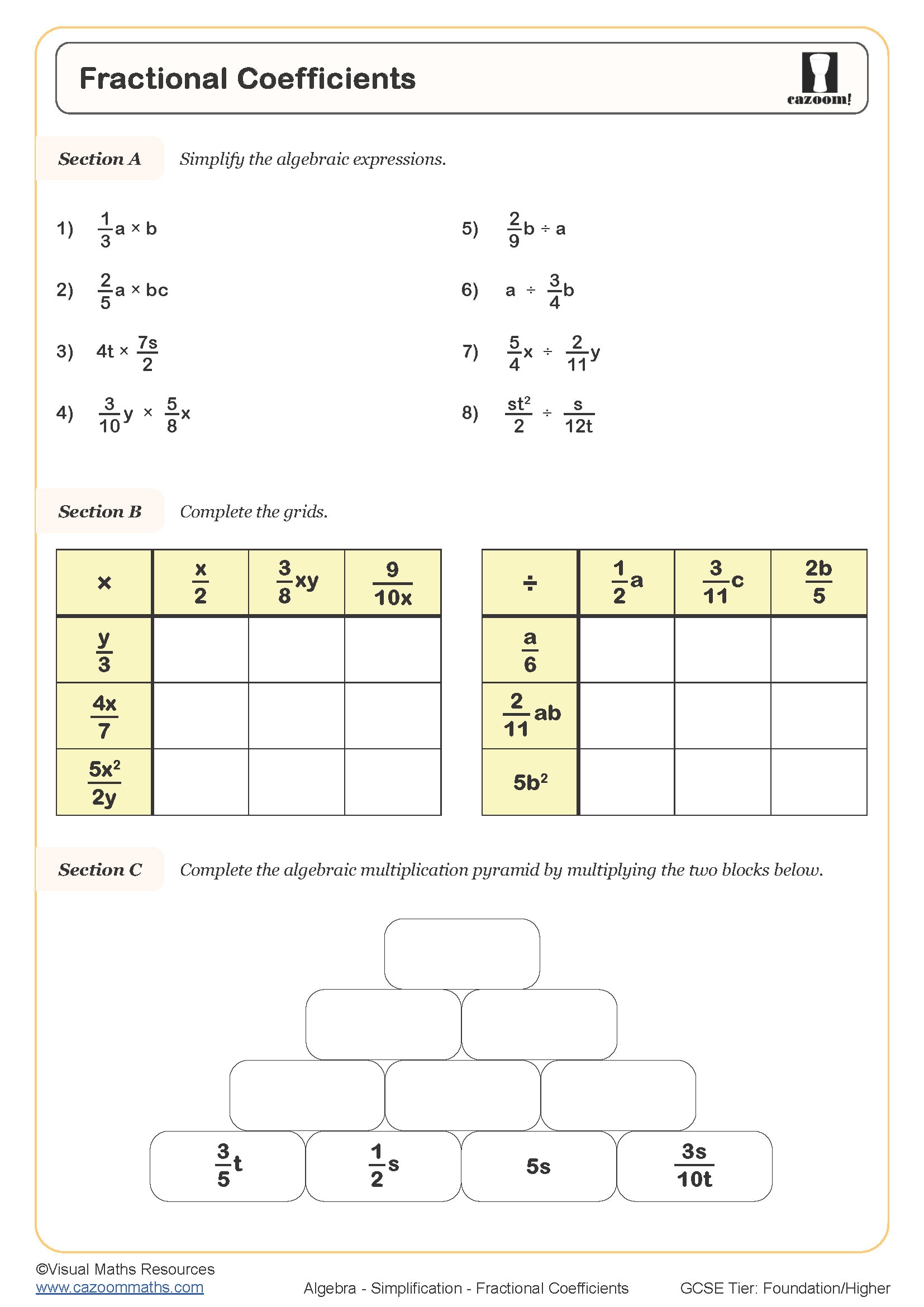
I Think of A Number Problems
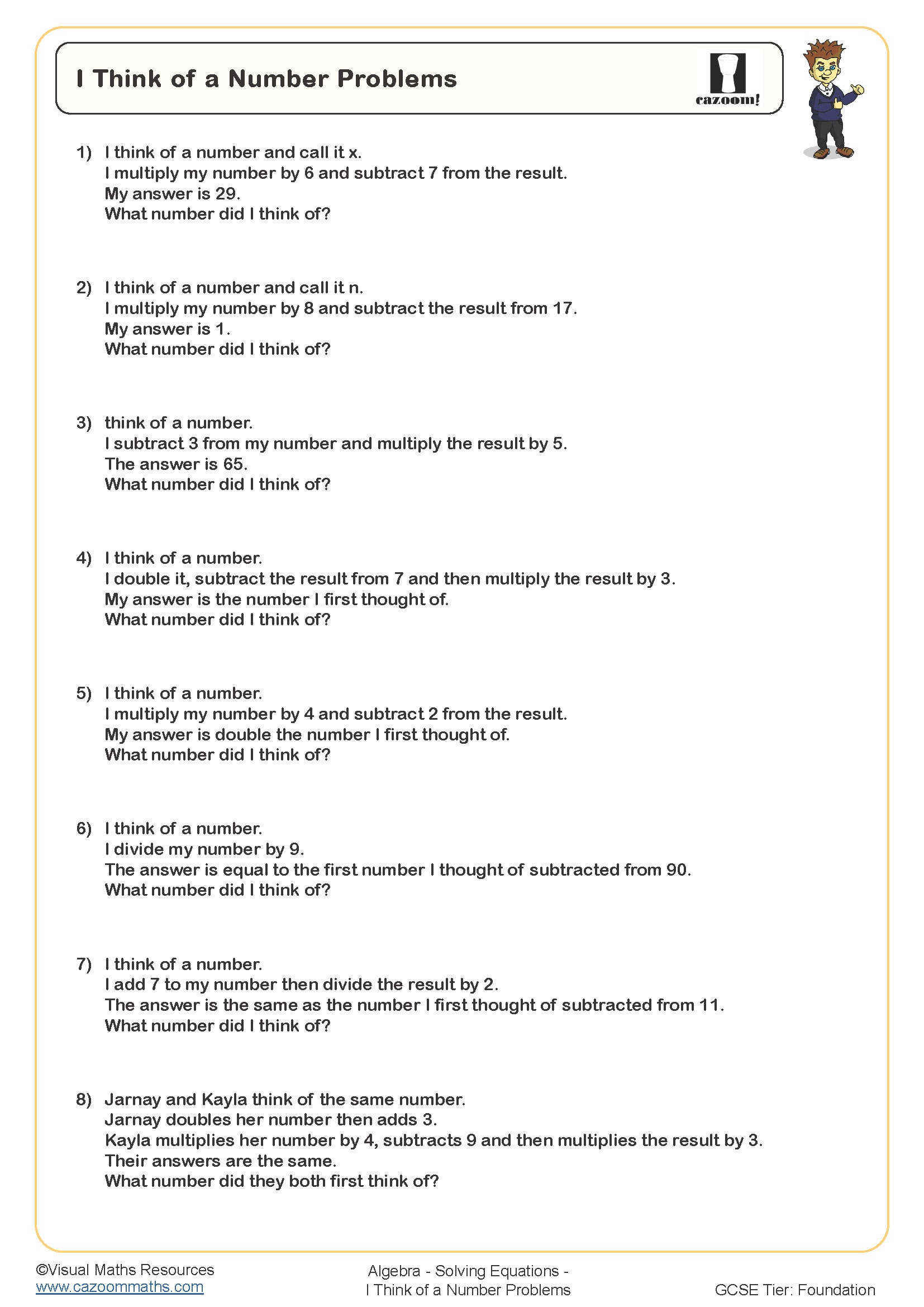
Language of Algebra
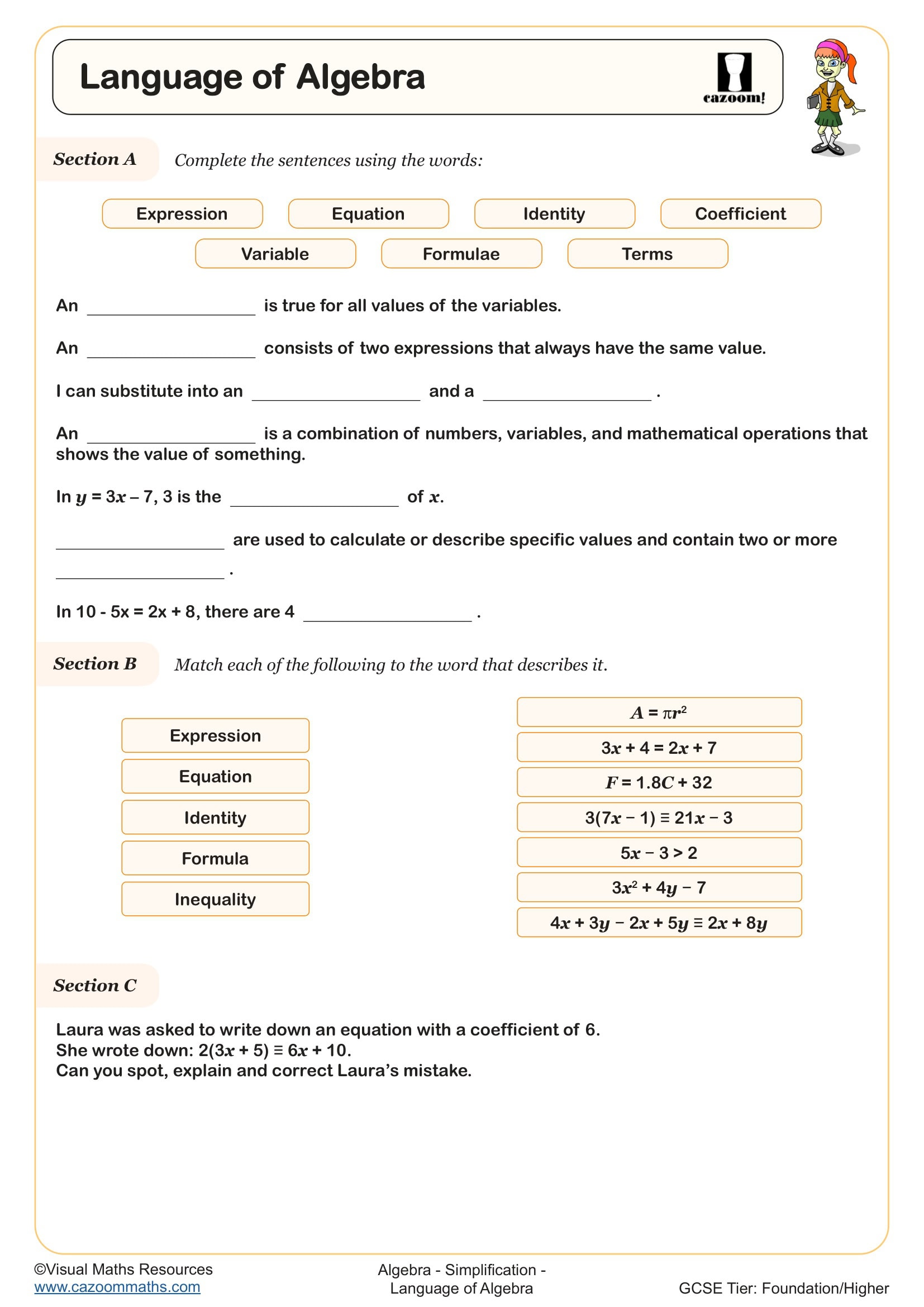
Showing Expressions as Equivalent
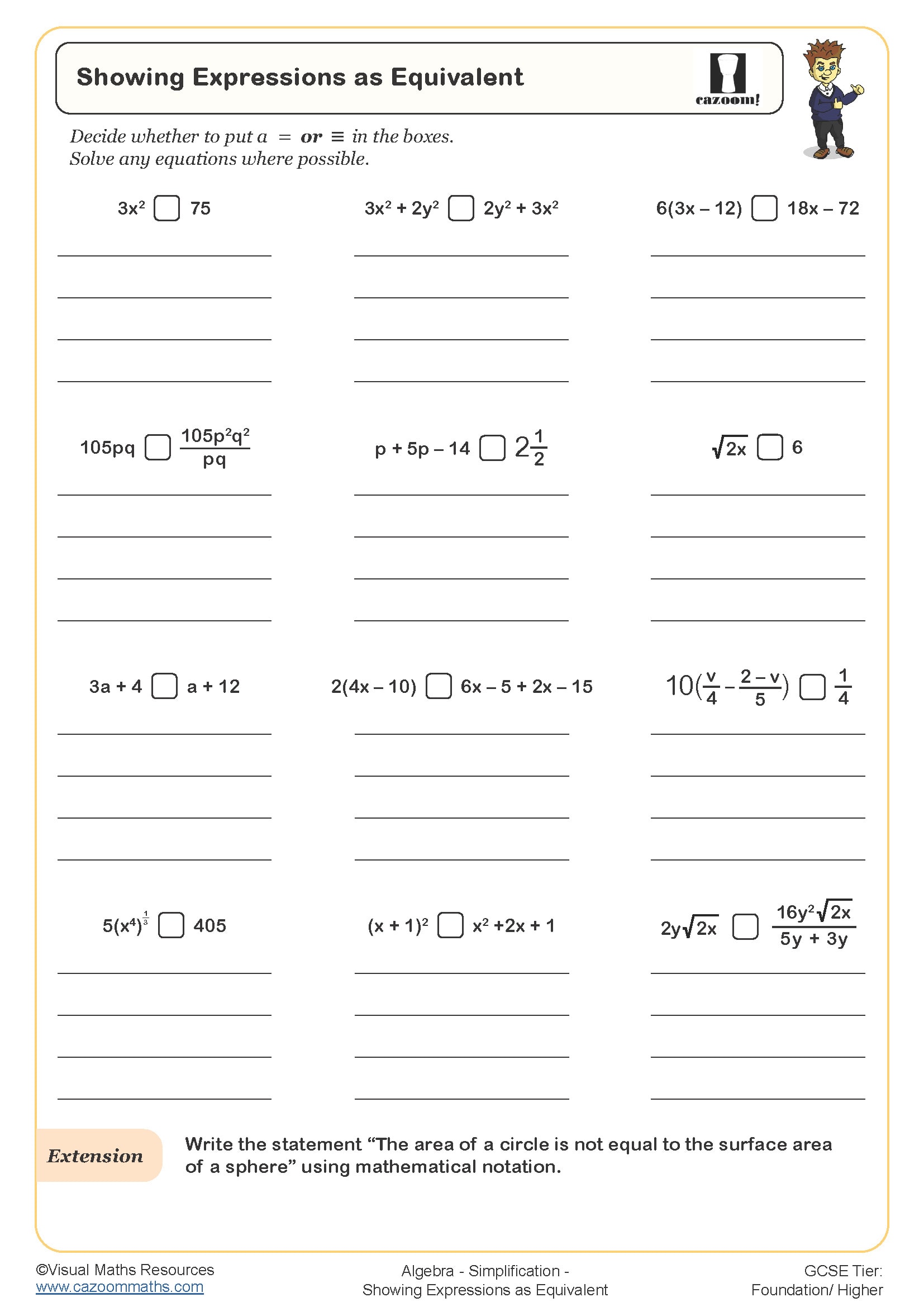
Solving Equations - Unknowns on Both Sides
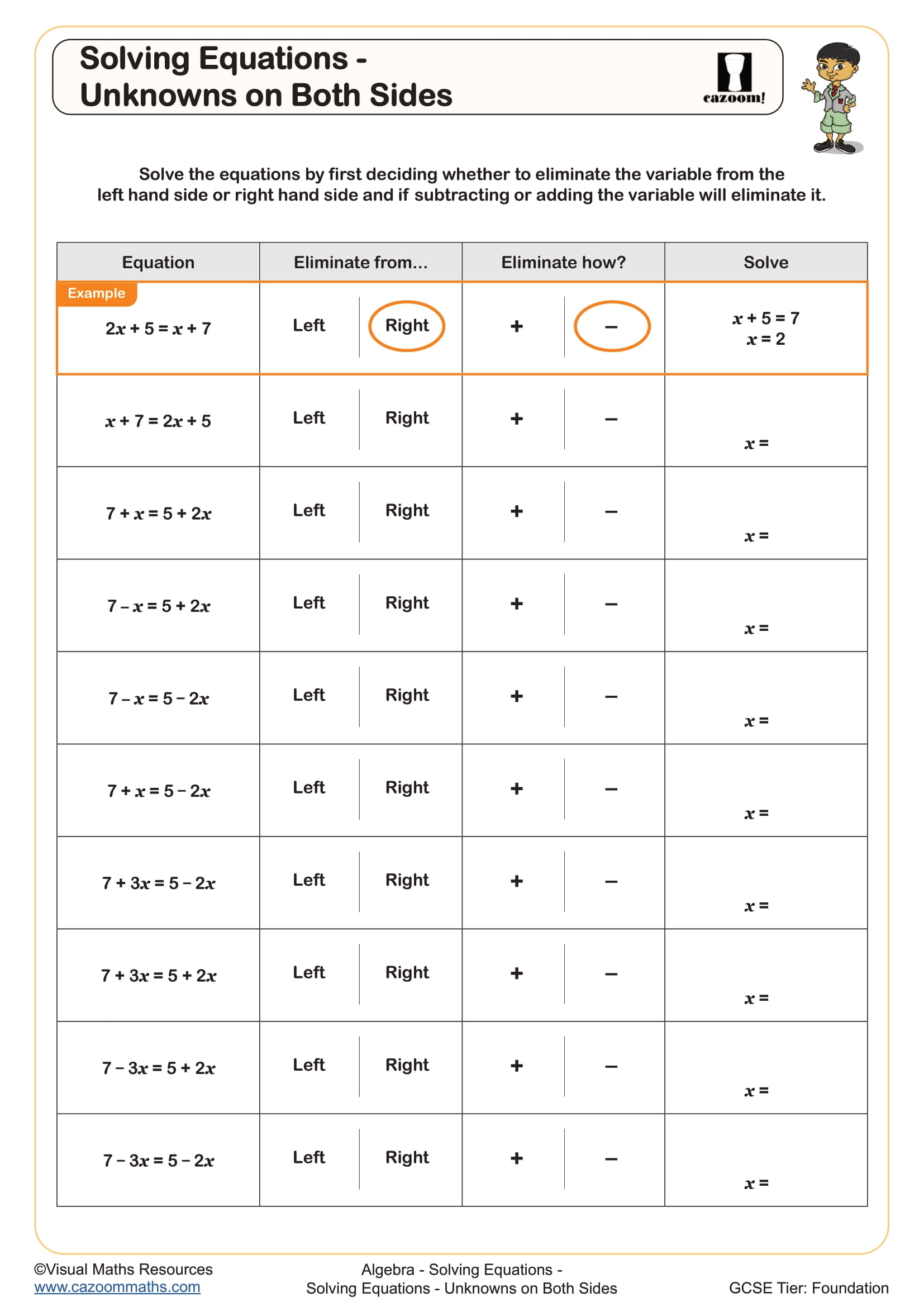
Solving Equations 15 Minute Challenge (A)
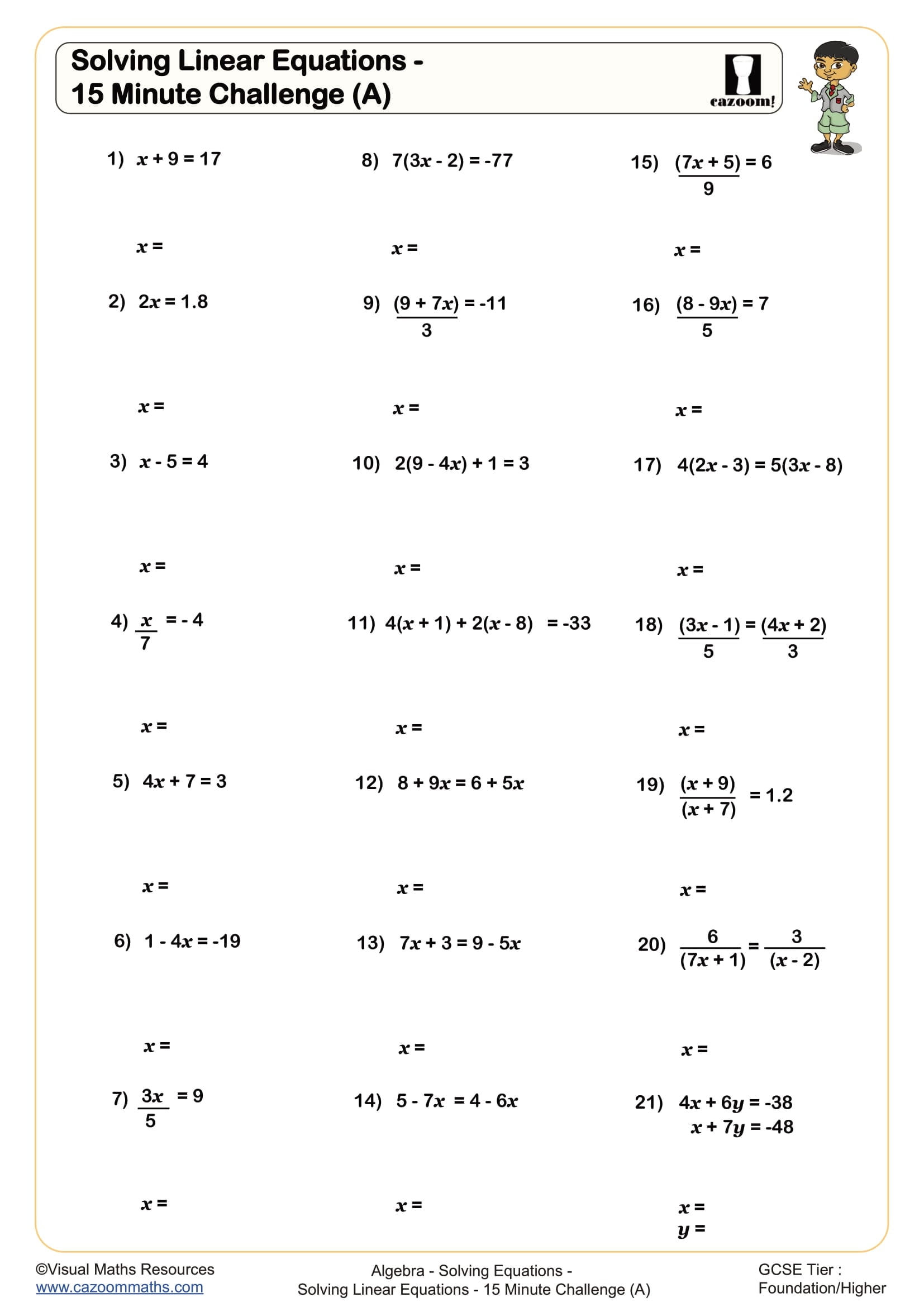
Solving Equations 15 Minute Challenge (B)
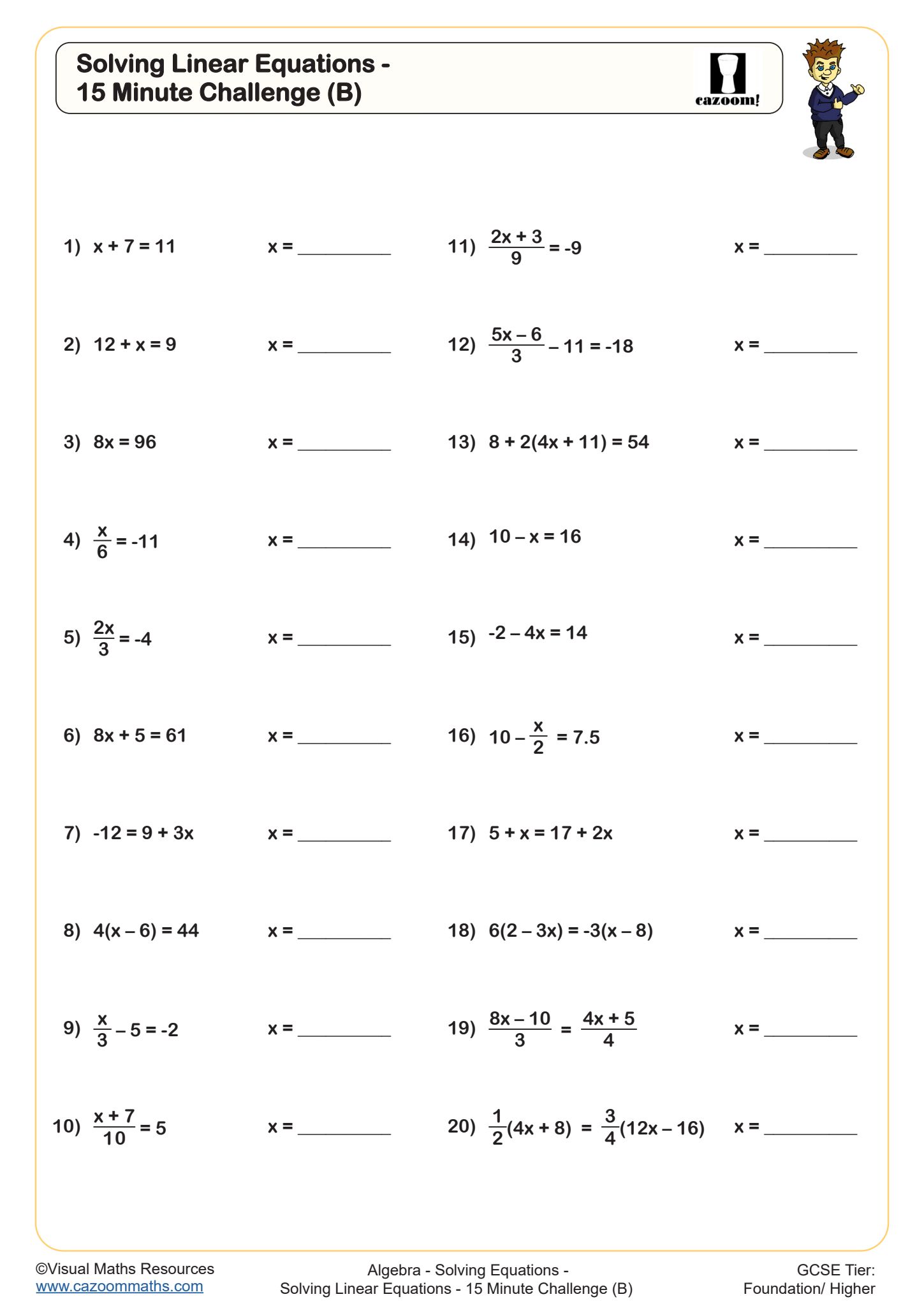
Solving Equations Involving Area of Rectangles
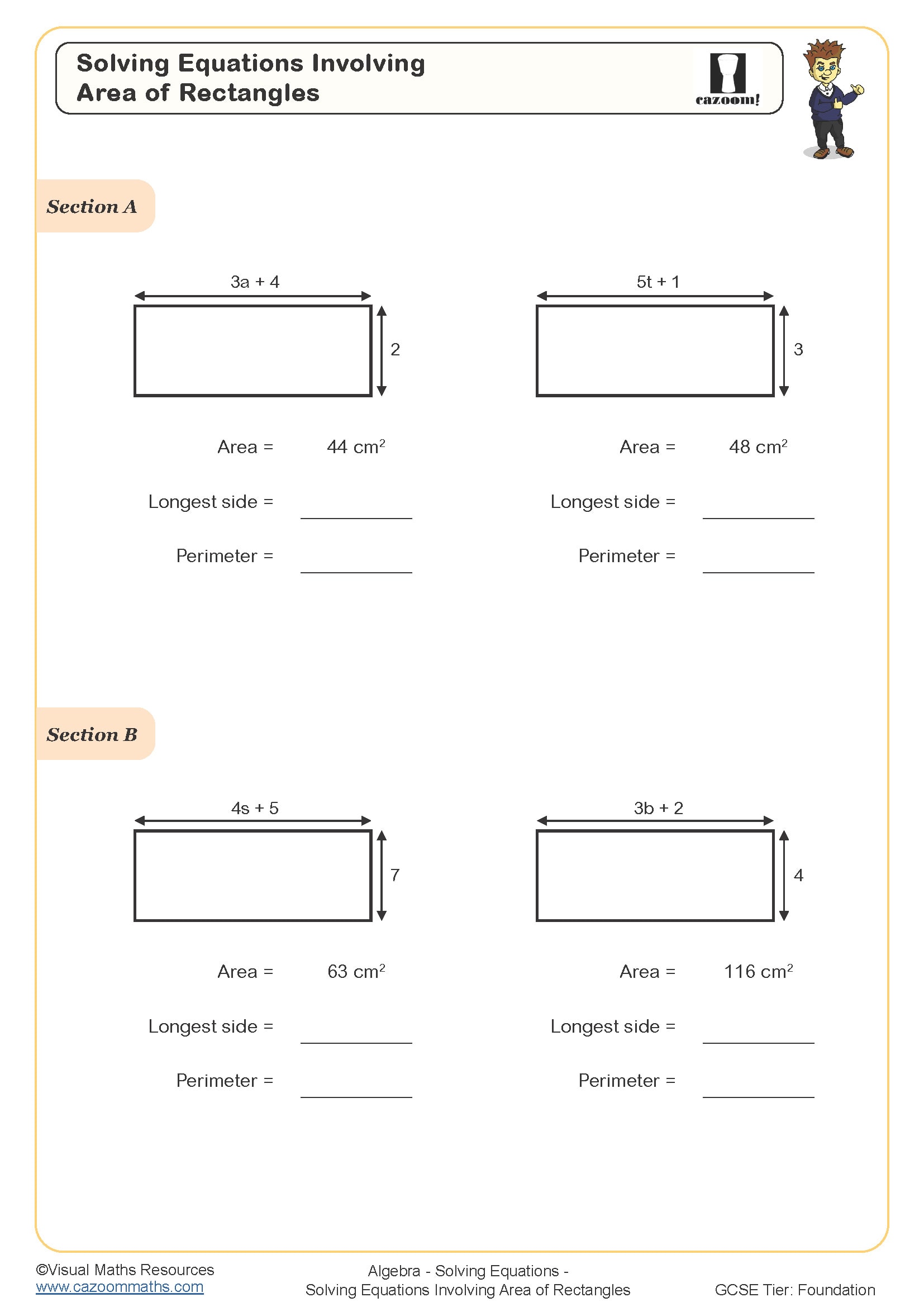
Solving Equations Involving Brackets
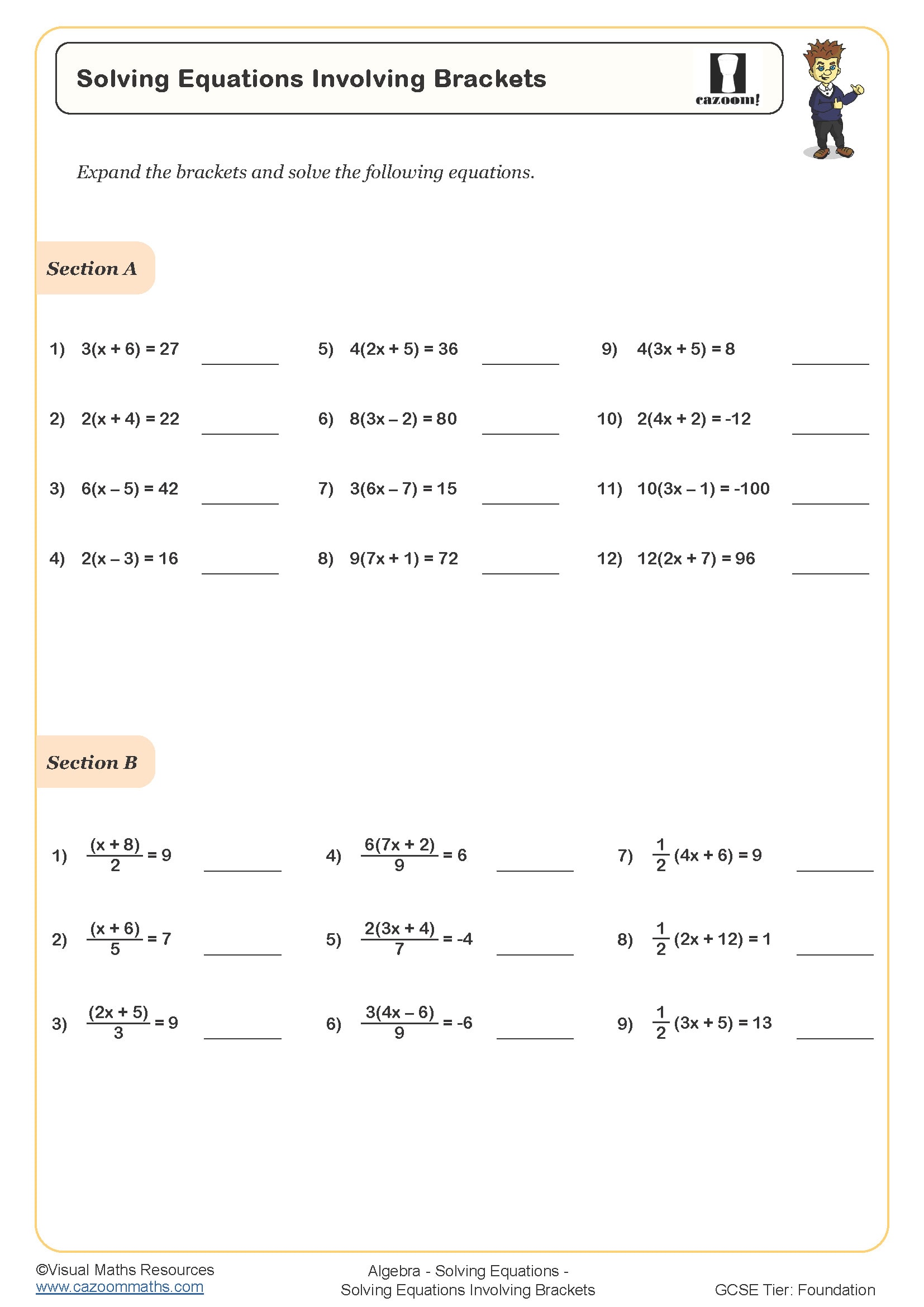
Solving Equations Involving Fractions
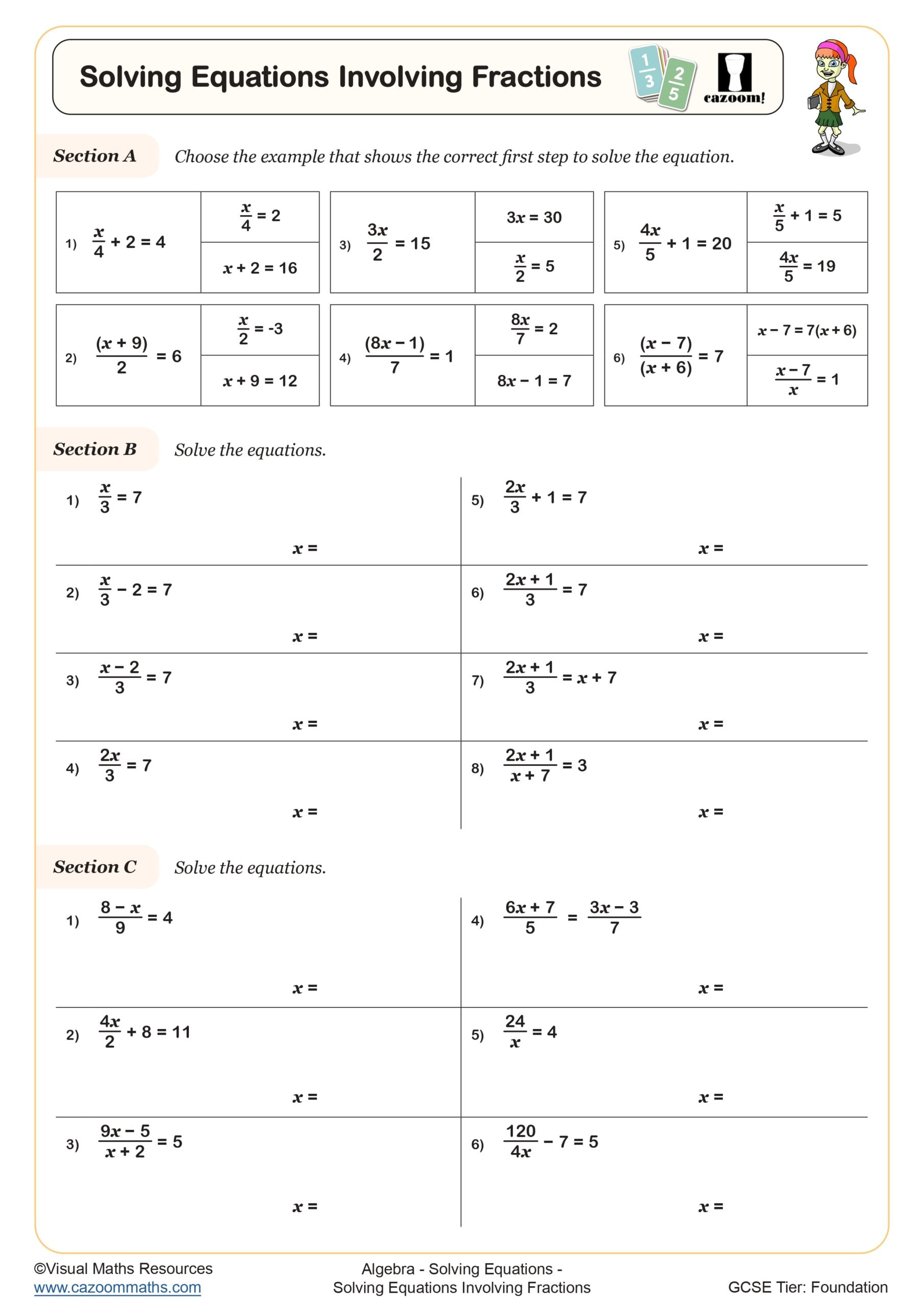
Solving Equations with Unknowns on Both Sides - Using Algebra Tiles
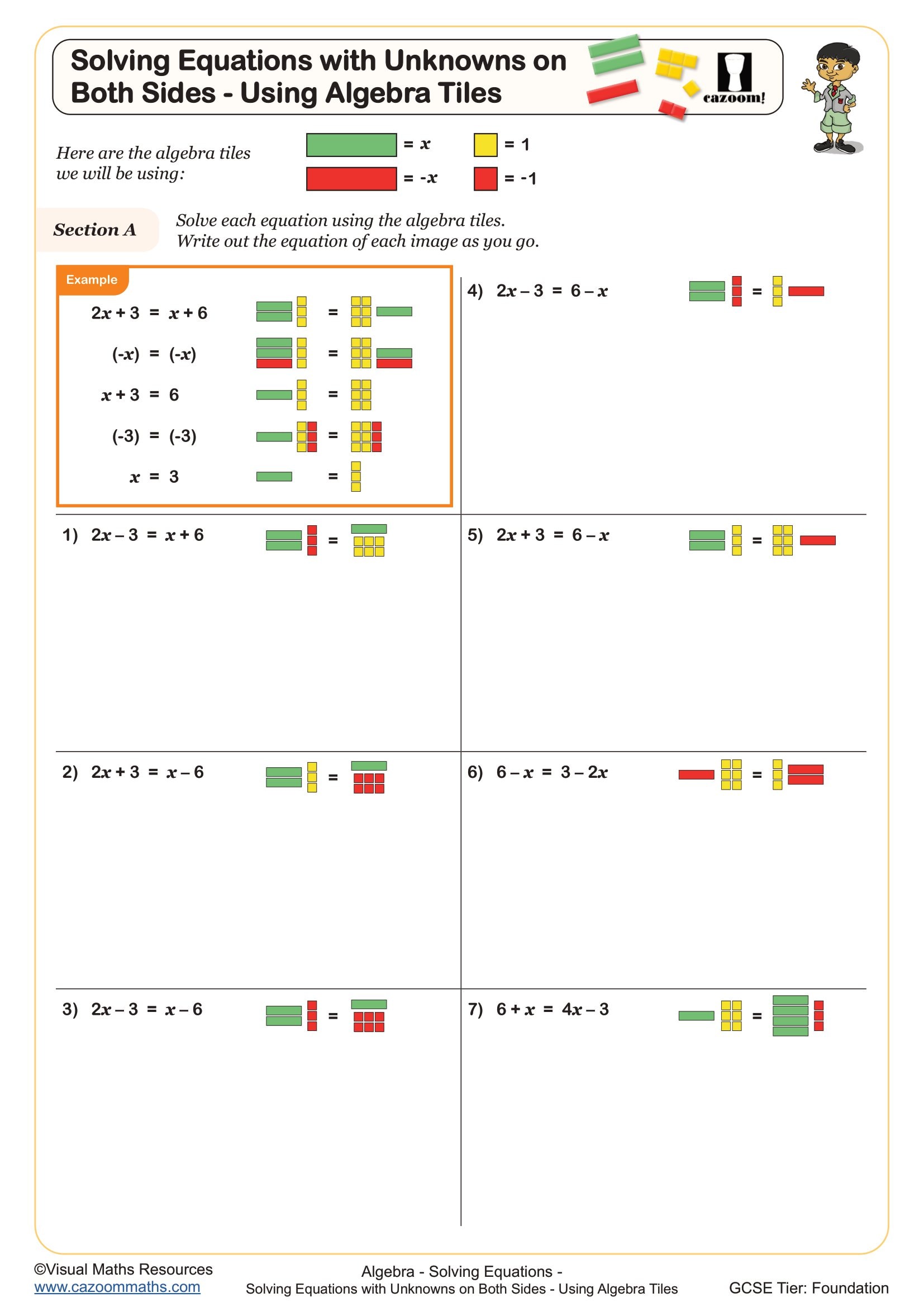
Solving Linear Equations (C)
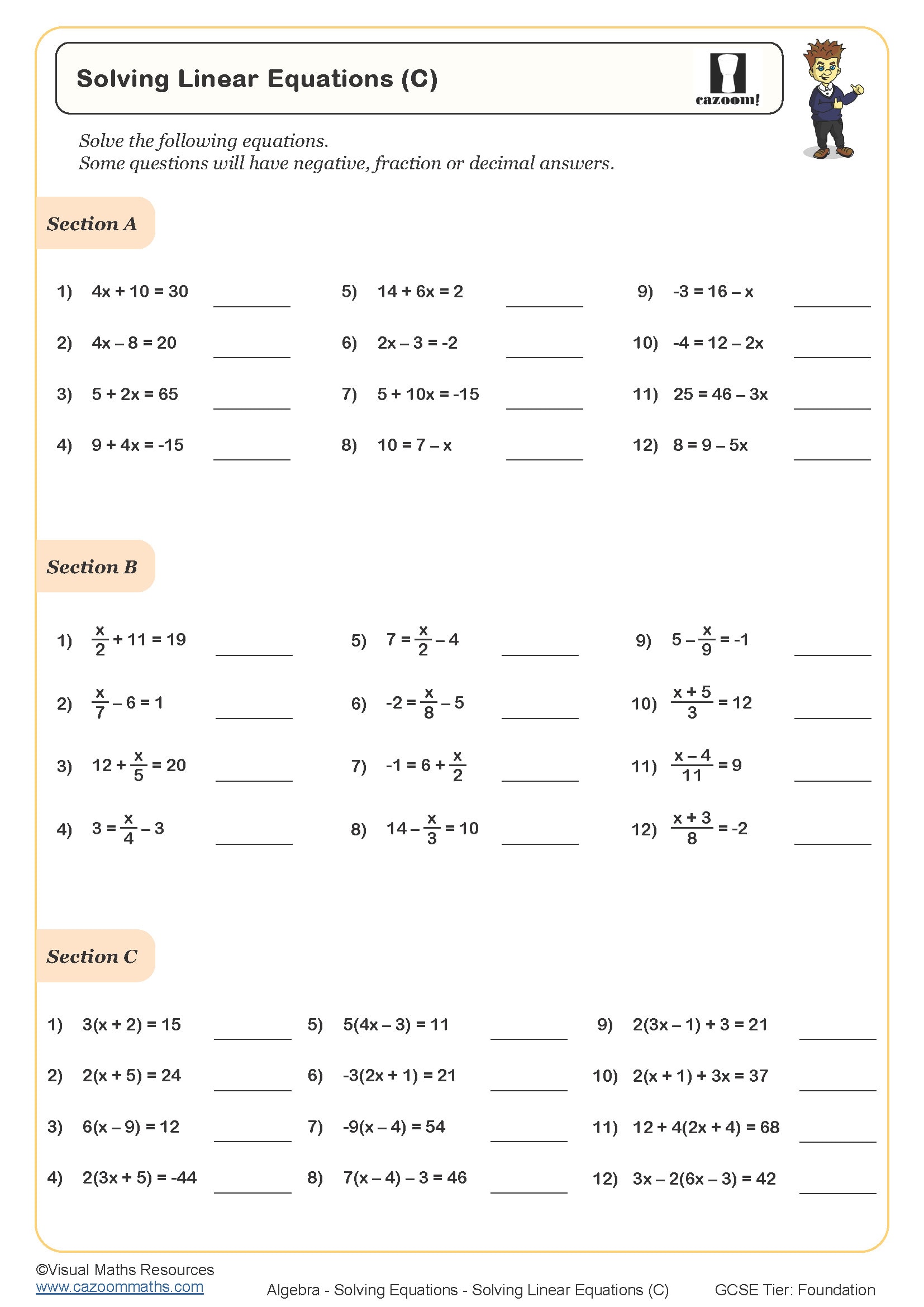
Solving Linear Equations (D)
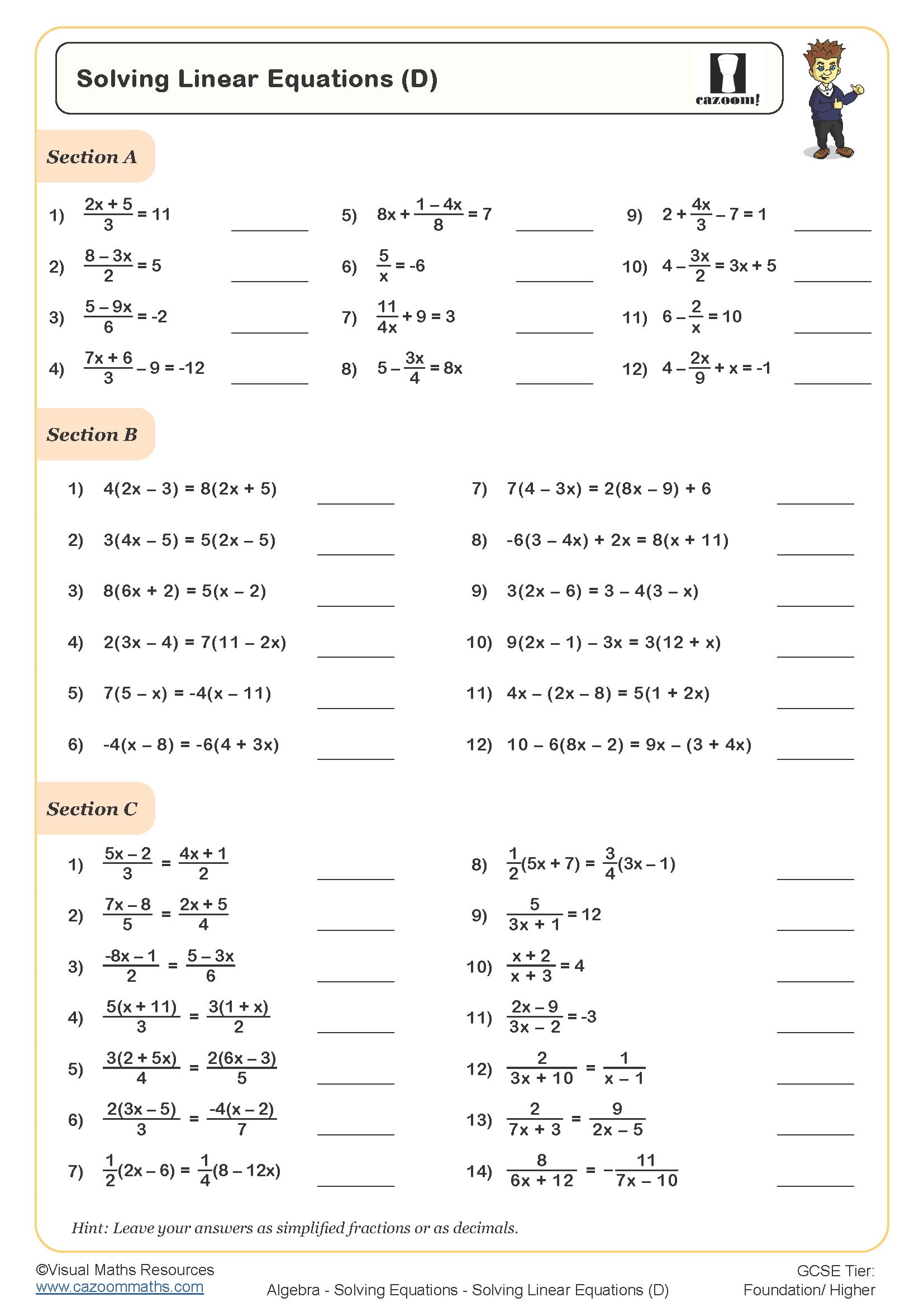
Solving Simultaneous Equations Graphically (A)
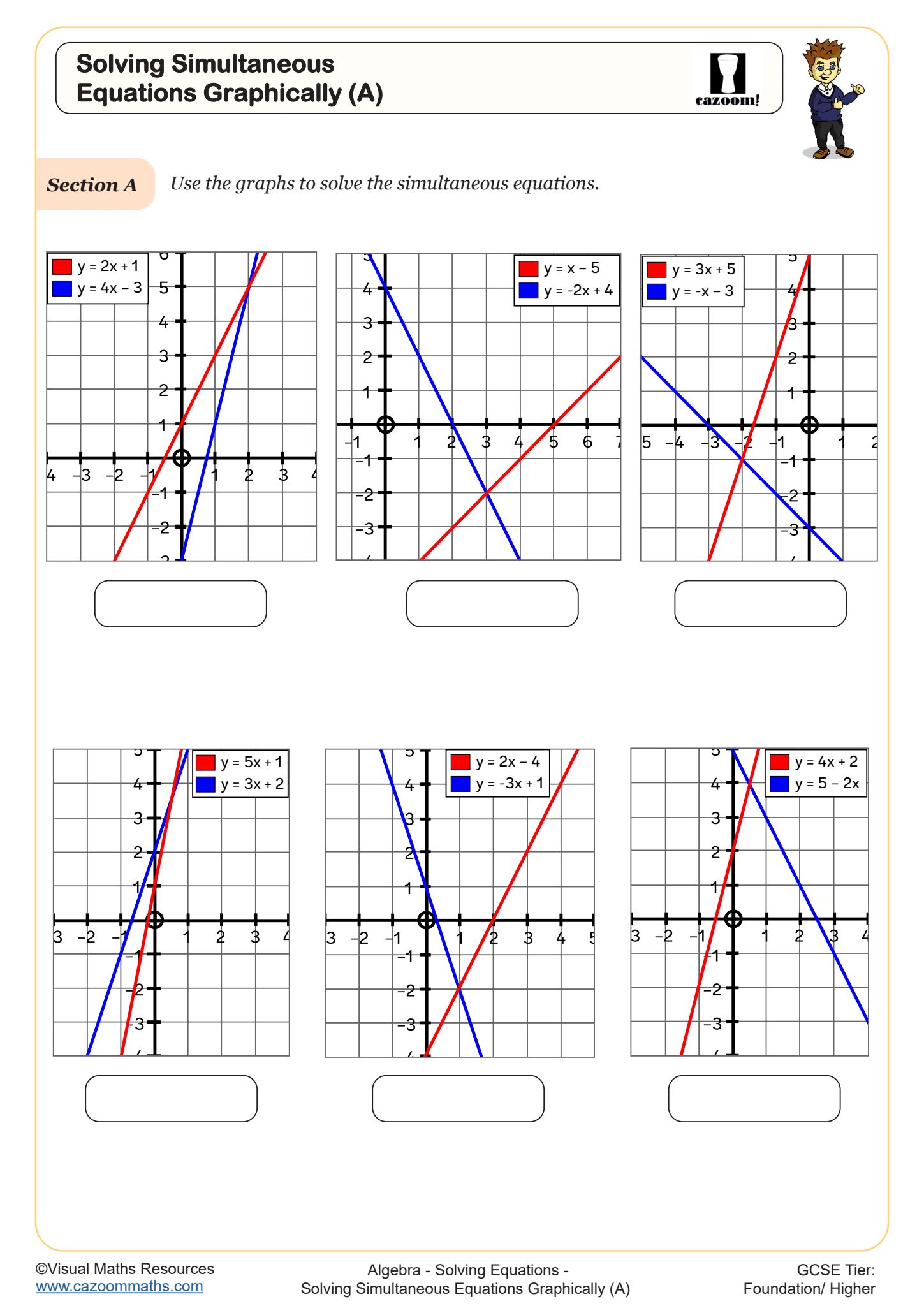
Trial and Improvement (A)
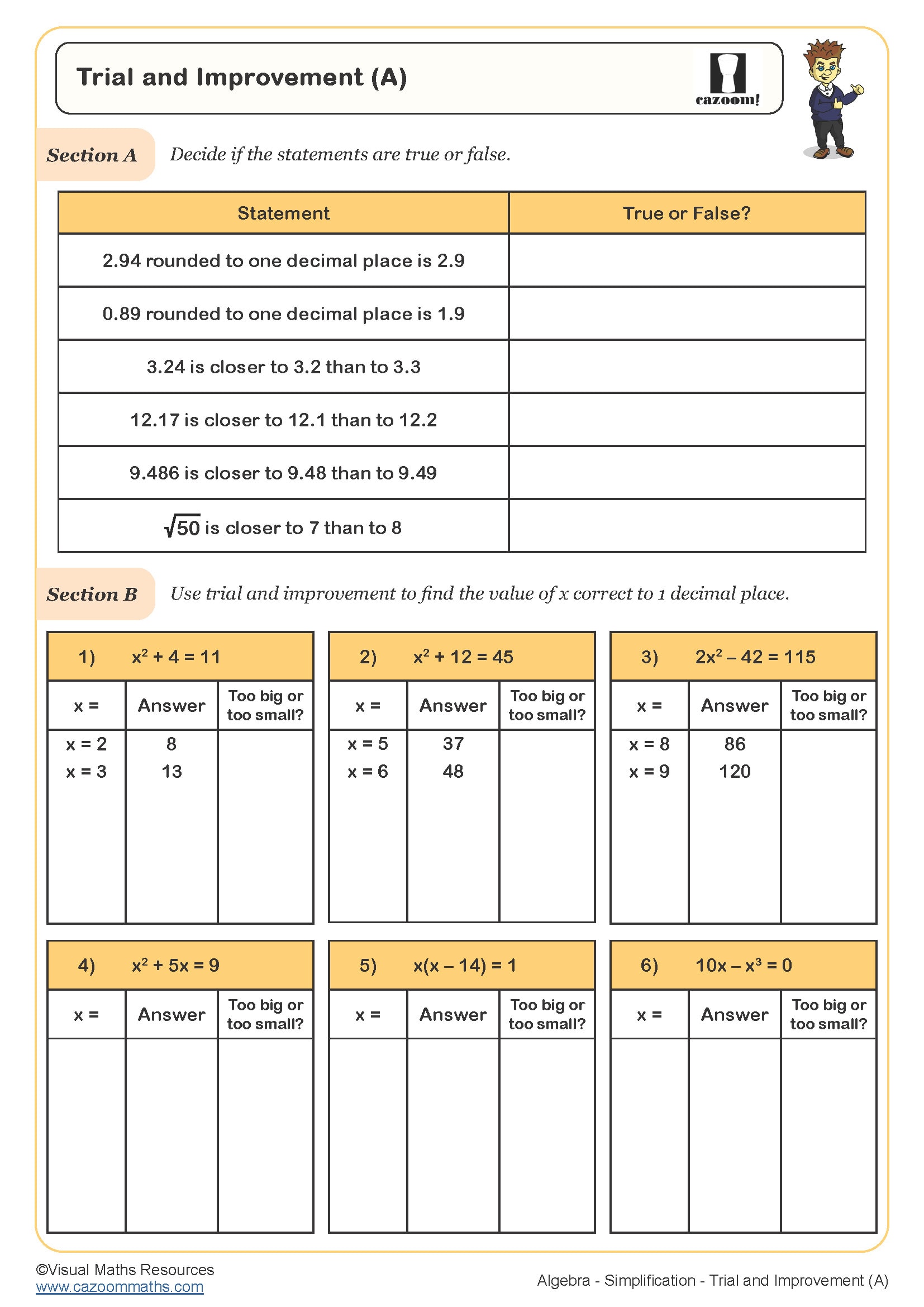
Trial and Improvement (B)
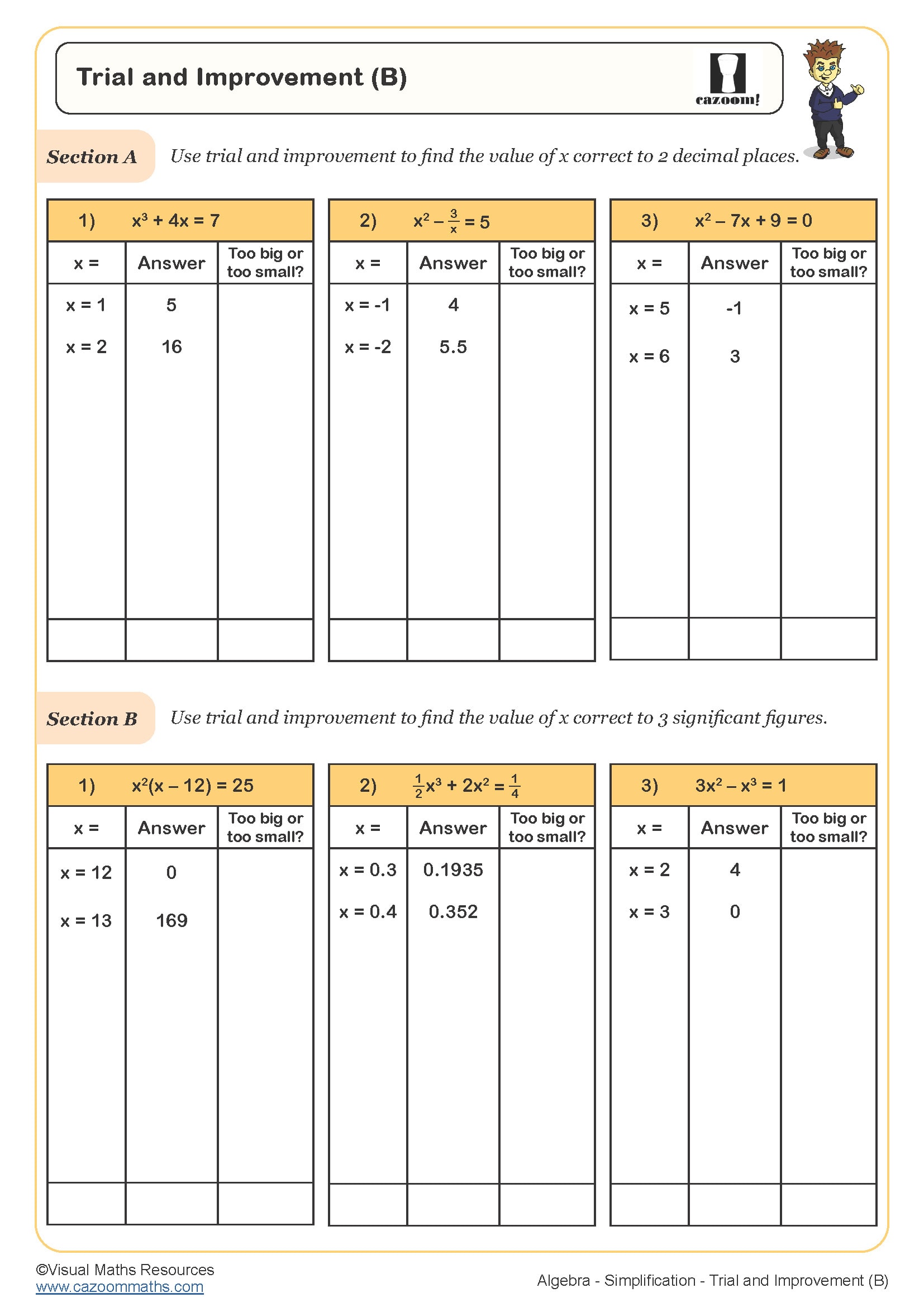
Writing Formulae
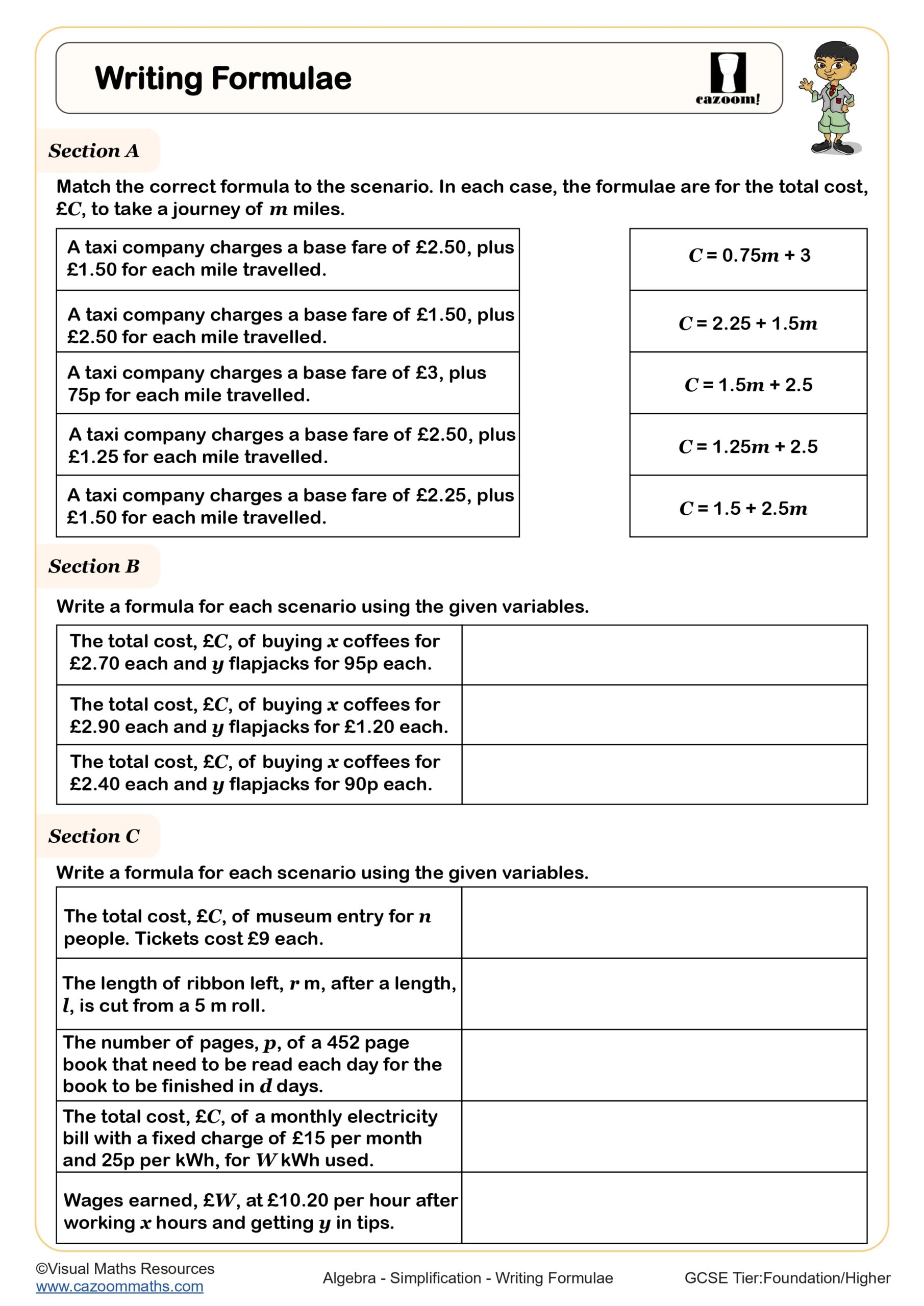
Discover the Key to Confident Learners Through Our PDF Printable Year 9 Algebra Worksheets
Mastering algebra at this stage fundamentally changes how students approach mathematical challenges, shifting from arithmetic calculation to symbolic reasoning. The development of these abilities through systematic practice leads to the formation of neural pathways, which enable students to apply logical thinking to all their academic subjects. The educational transition from abstract notation to a learning tool occurs during Year 9, marking a crucial educational stage. Students who solve various types of algebraic problems develop mental flexibility, which enables them to solve new mathematical problems. Students gain a more complete understanding of the material because they learn about different teaching methods which present the same information.
Specific learning benefits include:
• Manipulates algebraic expressions fluently
• Solves multi-step equations systematically
• Interprets graphical representations accurately
• Connects symbolic and visual mathematics
• Develops proof and reasoning skills
• Tackles non-routine problems confidently
• Communicates mathematical arguments clearly
Curriculum Coverage: How Our Year 9 Algebra Resources Fit Every Lesson
The worksheets present numerical examples at the beginning, followed by visual models and conclude with abstract symbolic manipulation, demonstrating expert-level problem-solving techniques in their solutions. The resources follow a logical progression because each one uses prior knowledge to develop more complex content at suitable points. Students encounter multiple challenges during their educational journey, which help them develop their procedural skills while deepening their conceptual understanding.
The worksheets in this collection include:
• Foundational Algebra Skills — Building blocks for expanding brackets, simplifying expressions, and translating between words and symbols.
• Substitution and Evaluation — Replacing variables with numbers to calculate expression values and solve formula problems.
• Linear Graphs and Functions — Plotting straight lines, finding gradients, and connecting equations with visual representations.
• Solving Equations — Finding unknown values through systematic manipulation of increasingly complex equation types.
• Inequalities — Working with greater than and less than relationships, both algebraically and graphically.
• Simultaneous Equations — Finding values that satisfy multiple equations using elimination, substitution, and graphical methods.
• Indices and Surds — Mastering power rules, roots, and exact form calculations without decimals.
• Algebraic Manipulation — Expanding double brackets, factorising expressions, and rearranging formulae skillfully.
• Algebraic Fractions — Simplifying, adding, subtracting, multiplying and dividing expressions containing fractions.
• Sequences — Identifying patterns and finding nth terms for arithmetic, geometric, and quadratic progressions.
• Real-World Applications — Using graphs to solve practical problems involving distance, speed, conversions, and costs.
• Quadratic Expressions — Solving second-degree equations through factorisation and other methods.
Losing Marks in Tests? Cazoom Maths Year 9 Algebra Activities Help Fix Common Errors
Educational professionals recognise that teaching resources must support academic standards while providing simple access to enable students to receive personalised learning without adding to teacher workload. These worksheets achieve this through graduated difficulty levels within each topic, allowing students to progress at appropriate paces. The inclusion of worked solutions demonstrates expert thinking processes, which enables teachers to detect when students use different reasoning approaches than traditional methods. The application of clear formatting and consistent structure in documents reduces mental effort, which enables students to focus on mathematical concepts. The answer keys designed for time efficiency enable quick grading while still allowing for complete feedback to students. The worksheets from Cazoom Maths work perfectly with current lesson plans because they offer dependable additional content for homework assignments, intervention sessions and extension work.
Science to Sports: Where Students Apply Year 9 Algebraic Thinking Beyond School
Mathematical modelling underpins technological innovation and scientific discovery, making algebraic competence increasingly valuable in modern careers. These skills enable precise communication of relationships and patterns across disciplines. For example-
• Programming algorithms and computational logic
• Engineering stress calculations and material properties
• Financial modelling and investment analysis
• Scientific research data analysis
• Architectural scaling and proportion calculations
• Game design, physics and scoring systems
• Medical research statistical modelling
• Climate change prediction models